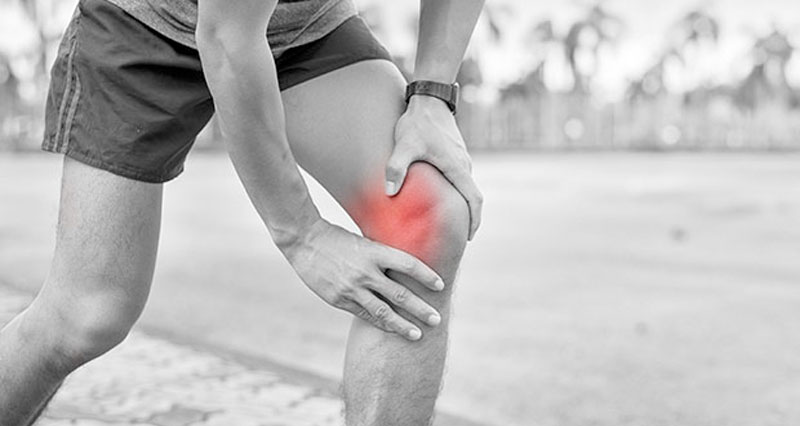People of all ages frequently complain about knee pain, which can have a big influence on everyday activities. The complex knee joint supports our body weight and enables a variety of motions, including bending, running, and walking. The knee is prone to pain and discomfort due to its frequent use and susceptibility to injury.
Knee pain can appear in a variety of ways, from a slight ache to a strong, excruciating agony. It could only affect a certain region or spread over the entire knee joint. Numerous factors, such as traumas, overuse, arthritis, and underlying medical disorders, can contribute to knee pain. The best course of treatment must be chosen after establishing the underlying reason for your knee discomfort.
Importance of finding quick relief
Knee discomfort can have a substantial impact on your quality of life, making it difficult to carry out routine duties and take part in physical activities. It can restrict your movement, prevent you from participating in certain sports or physical activities, and even disturb your sleep. Therefore, regaining normal functioning and enhancing your general well-being require obtaining speedy relief from knee discomfort.
Prompt treatment of knee discomfort can stop it from getting worse and possibly causing long-term consequences. Additionally, it can aid in the treatment of related symptoms like stiffness, edema, and reduced range of motion. You can reduce the impact of knee pain on your everyday life and improve your ability to participate in activities you enjoy by acting quickly.
Understand the causes of knee pain
Trauma and injuries: Sprains, strains, ligament tears (such as anterior cruciate ligament or ACL tears), meniscus tears, dislocations, and fractures can cause knee discomfort. These events, incidents, or unexpected knee hits can cause these injuries.
Overuse or repetitive strain:
Overusing the knee joint or performing repetitive motions too frequently might cause pain. Running, jumping, crouching, or squatting for long periods can put a strain on the knee and hurt. The knee joint experiences excessive stress, which frequently results in overuse injuries such as tendinitis or patellofemoral pain syndrome (runner’s knee).
Arthritis and joint inflammation:
Knee pain is a sign of several types of arthritis, including osteoarthritis, rheumatoid arthritis, and gout. Arthritis and joint inflammation. The most common type, osteoarthritis, is brought on by the cartilage in the joints degrading over time. An autoimmune condition that damages joints and produces inflammation is rheumatoid arthritis. The buildup of uric acid crystals in the joint results in gout, a kind of arthritis.
Identifying the specific cause of your knee pain
Developing a successful treatment strategy requires pinpointing the precise source of your knee discomfort. Take into account the following elements to identify the root cause:
Medical history:
Tell your doctor everything you know about your health, including any surgeries, injuries, or illnesses that may have caused you to have knee pain in the past.
Physical examination:
During a physical examination, your knee’s range of motion, stability, wellness, soreness, and inflammatory symptoms will be evaluated. The medical professional can uncover potential causes and rule out particular illnesses with the use of this evaluation.
Imaging testing:
Your healthcare provider may advise imaging tests like X-rays, MRI scans, or CT scans depending on the suspected cause. These exams offer precise pictures of the knee’s bones, ligaments, tendons, and cartilage, which can be used to diagnose injuries or spot arthritic symptoms.
Additional tests:
Blood tests or joint fluid analysis may be required in some circumstances to detect inflammation, infection, or particular markers linked to certain disorders.
Home remedies for knee pain relief
Natural remedies and supplements
Hot and cold therapy:
Therapy with heat or cold can temporarily relieve pain in the knee that is injured. To calm the knee, use a heating pad, warm compress, or a warm bath. As an alternative, use an ice pack or cold compress to numb the region and minimize swelling.
Knee soak:
Epsom salt can be used to soothe and relieve inflammation in the knee by soaking it in warm water. Magnesium sulphate, a component of Epsom salt, may help to relax muscles and lessen pain.
Ginger and turmeric:
These two ingredients naturally reduce inflammation. It may help to lessen knee pain and inflammation to incorporate them into your diet or take them as supplements. Before beginning any new supplements, seek medical advice.
Topical creams and ointments
Nonsteroidal anti-inflammatory creams: NSAID-containing over-the-counter creams or gels can be administered topically to the knee to assist relieve pain and inflammation.
A cream containing capsaicin: Made from chilli peppers, capsaicin is well-known for its ability to relieve pain. Reduced pain signals may result from topically applying capsaicin ointment to the knee.
Conclusion:
Finally, knee pain can seriously interfere with your daily life and limit your mobility. For your body to return to normal functioning and for your general well-being to improve, finding rapid relief is essential. You can create a successful therapy strategy by comprehending the reasons behind knee discomfort and determining the precise underlying problem.

